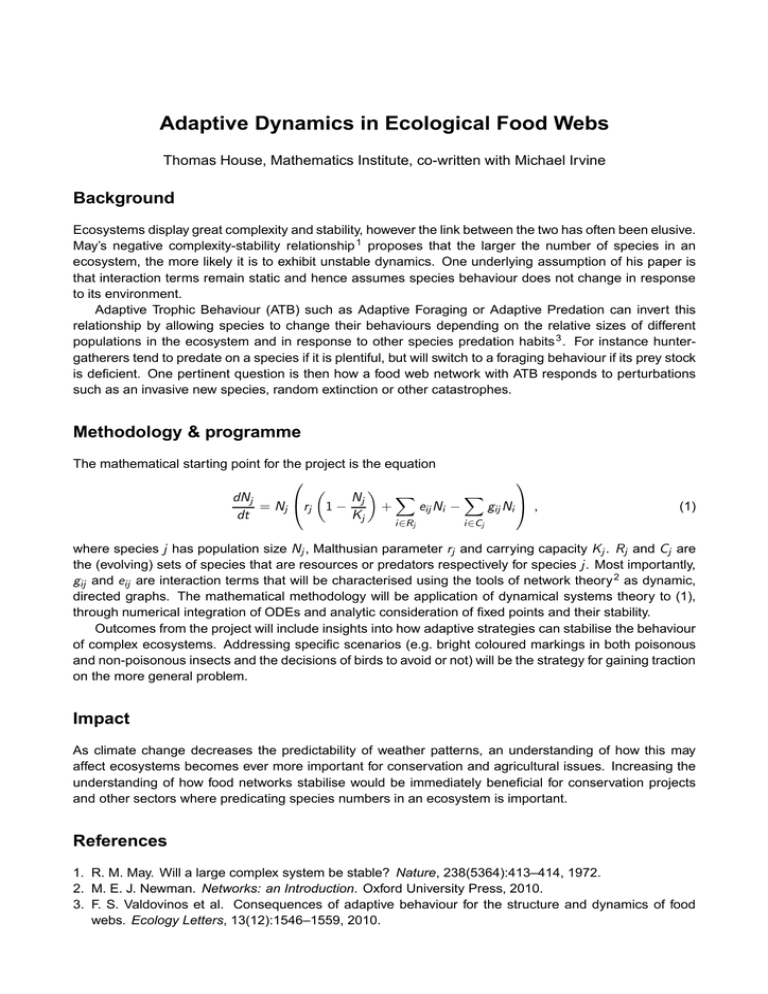Adaptive Dynamics in Ecological Food Webs Background
advertisement

Adaptive Dynamics in Ecological Food Webs Thomas House, Mathematics Institute, co-written with Michael Irvine Background Ecosystems display great complexity and stability, however the link between the two has often been elusive. May’s negative complexity-stability relationship 1 proposes that the larger the number of species in an ecosystem, the more likely it is to exhibit unstable dynamics. One underlying assumption of his paper is that interaction terms remain static and hence assumes species behaviour does not change in response to its environment. Adaptive Trophic Behaviour (ATB) such as Adaptive Foraging or Adaptive Predation can invert this relationship by allowing species to change their behaviours depending on the relative sizes of different populations in the ecosystem and in response to other species predation habits 3 . For instance huntergatherers tend to predate on a species if it is plentiful, but will switch to a foraging behaviour if its prey stock is deficient. One pertinent question is then how a food web network with ATB responds to perturbations such as an invasive new species, random extinction or other catastrophes. Methodology & programme The mathematical starting point for the project is the equation X X dNj Nj = Nj rj 1 − + eij Ni − gij Ni , dt Kj i ∈Rj (1) i ∈Cj where species j has population size Nj , Malthusian parameter rj and carrying capacity Kj . Rj and Cj are the (evolving) sets of species that are resources or predators respectively for species j . Most importantly, gij and eij are interaction terms that will be characterised using the tools of network theory 2 as dynamic, directed graphs. The mathematical methodology will be application of dynamical systems theory to (1), through numerical integration of ODEs and analytic consideration of fixed points and their stability. Outcomes from the project will include insights into how adaptive strategies can stabilise the behaviour of complex ecosystems. Addressing specific scenarios (e.g. bright coloured markings in both poisonous and non-poisonous insects and the decisions of birds to avoid or not) will be the strategy for gaining traction on the more general problem. Impact As climate change decreases the predictability of weather patterns, an understanding of how this may affect ecosystems becomes ever more important for conservation and agricultural issues. Increasing the understanding of how food networks stabilise would be immediately beneficial for conservation projects and other sectors where predicating species numbers in an ecosystem is important. References 1. R. M. May. Will a large complex system be stable? Nature, 238(5364):413–414, 1972. 2. M. E. J. Newman. Networks: an Introduction. Oxford University Press, 2010. 3. F. S. Valdovinos et al. Consequences of adaptive behaviour for the structure and dynamics of food webs. Ecology Letters, 13(12):1546–1559, 2010.




